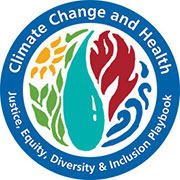Step 4: Develop and implement a climate and health adaptation plan
 Applying climate change adaptation knowledge and planning from multiple levels of governance, with an overriding focus on community engagement
Applying climate change adaptation knowledge and planning from multiple levels of governance, with an overriding focus on community engagement
Step 4’s goal is to create and implement the adaptation plan selected in Step 3. A comprehensive plan will include particular consideration of the jurisdiction’s environmental risks, health threats, and at-risk populations and will be updated regularly. Once you have selected an intervention strategy, bringing the following resources together can provide a comprehensive picture that can help you get started:1
- Table of recommended adaptation actions indicating priority, lead program/partner responsibility and progress measure/metric (if available)
- Any predetermined criteria used to prioritize potential adaptation plans
- Community profile which includes background information related to the intended intervention and climate risks that it will address
- A summary of regional/municipal climate change scenario(s) related to the climate hazards addressed
- Maps showing risks and priorities, such as EJSCREEN or the CDC / ATSDR Social Vulnerability Index
- Summary of relevant local climate change impacts
- Identification of risks and opportunities specific to the adaptation plan
- Results of a racial equity impact assessment
- A logic model reflecting the theory of change for the adaptation action
- Action plan for tasks to be accomplished, using project management tools such as Gantt charts and RACI matrices and a gap analysis if applicable
- List of key community partners and project participants who will contribute to the implementation or who could potentially be involved
